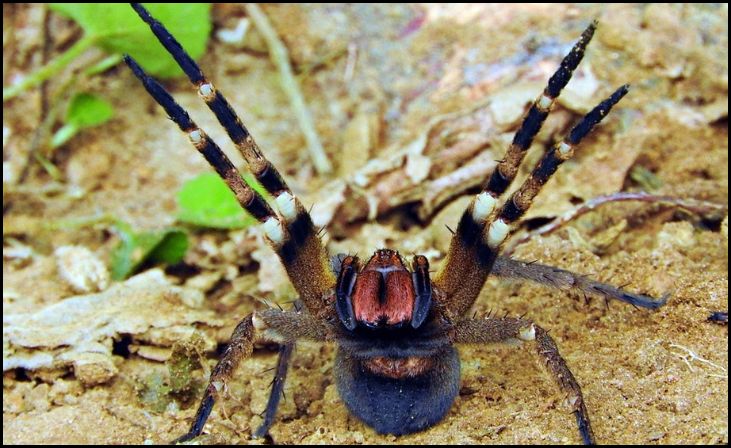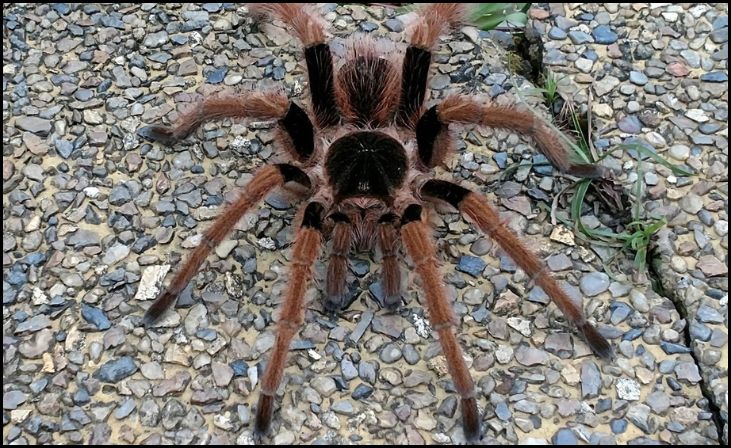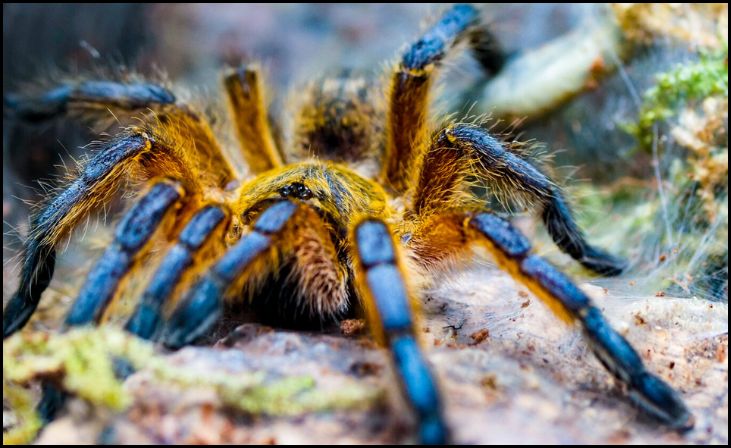In the vast tapestry of Earth’s biodiversity, spiders are some of the most fascinating and misunderstood creatures. While many people have a fear of spiders, these arachnids play a crucial role in ecosystems worldwide. From the smallest jumping spiders to the largest tarantulas, each species has its own unique characteristics and adaptations. In this article, we’ll explore the nine biggest spiders still crawling the Earth in 2024, showcasing their impressive size and remarkable traits.
1. Goliath Bird-Eater (Theraphosa blondi)
The Goliath bird-eater holds the title for the world’s largest spider by mass. Found in the rainforests of South America, particularly in the Amazon Basin, this impressive arachnid can have a leg span of up to 30 centimeters (12 inches). Despite its name, the Goliath bird-eater primarily preys on insects, rodents, and other small creatures. While its venom is not lethal to humans, its sheer size and imposing appearance make it a formidable sight.
2. Brazilian Wandering Spider (Phoneutria spp.)

Known for its potent venom and wandering behavior, the Brazilian wandering spider is one of the largest arachnids in the world. Found in South and Central America, this spider can have a leg span of up to 15 centimeters (6 inches). Its venom is highly neurotoxic, capable of causing severe pain and, in some cases, paralysis. Despite its dangerous reputation, encounters with humans are relatively rare, as the Brazilian wandering spider prefers to avoid confrontation.
3. Huntsman Spider (Sparassidae)
The huntsman spider is renowned for its impressive size and speed. Found in various regions around the world, including Australia, Asia, and Africa, these spiders can have a leg span of up to 25 centimeters (10 inches). Despite their intimidating appearance, huntsman spiders are relatively harmless to humans, feeding primarily on insects and other small prey. Their flattened bodies and long legs allow them to navigate tight spaces with ease, making them adept hunters in their natural habitat.
4. Giant Huntsman Spider (Heteropoda maxima)
As its name suggests, the giant huntsman spider is one of the largest members of the huntsman spider family. Found in caves and forests in Laos, this arachnid can have a leg span of up to 30 centimeters (12 inches), making it one of the largest spiders by leg span. While its size may be intimidating, the giant huntsman spider is non-venomous and poses no threat to humans. Despite its formidable appearance, it plays a crucial role in controlling insect populations in its ecosystem.
5. Colombian Giant Tarantula (Megaphobema robustum)

The Colombian giant tarantula is a massive spider found in the rainforests of Colombia and Venezuela. With a leg span of up to 25 centimeters (10 inches), this impressive arachnid is one of the largest tarantula species in the world. Despite its intimidating size, the Colombian giant tarantula is relatively docile and is often kept as a pet by spider enthusiasts. While its venom is not considered dangerous to humans, its sheer size and appearance can instill fear in those who encounter it.
6. Australian Tarantula (Selenocosmia crassipes)
Australia is home to a diverse array of spiders, including some of the largest tarantula species in the world. The Australian tarantula, also known as the Queensland whistling spider, can have a leg span of up to 20 centimeters (8 inches). Despite its impressive size, this spider is relatively harmless to humans, feeding primarily on insects and other small prey. Its distinctive whistling sound, produced by rubbing together its front legs, is used to communicate with potential mates.
7. King Baboon Spider (Pelinobius muticus)
The king baboon spider is a large and impressive arachnid found in the savannas and grasslands of Africa. With a leg span of up to 20 centimeters (8 inches), this spider is one of the largest baboon spider species. Despite its intimidating appearance, the king baboon spider is relatively docile and is often kept as a pet by spider enthusiasts. While its venom is not considered dangerous to humans, its large fangs and imposing size make it a formidable predator in its natural habitat.
8. Brazilian Salmon Pink Bird-Eating Tarantula (Lasiodora parahybana)
The Brazilian salmon pink bird-eating tarantula is a massive spider found in the forests of Brazil. With a leg span of up to 25 centimeters (10 inches), this impressive arachnid is one of the largest tarantula species in the world. Despite its intimidating name, this spider primarily preys on insects and other small creatures. While its venom is not considered dangerous to humans, its large size and imposing appearance make it a formidable sight.
9. Hercules Baboon Spider (Harpactira pulchripes)

The Hercules baboon spider is a striking arachnid found in the deserts and scrublands of southern Africa. With a leg span of up to 20 centimeters (8 inches), this spider is one of the largest baboon spider species. Despite its imposing size, the Hercules baboon spider is relatively docile and is often kept as a pet by spider enthusiasts. While its venom is not considered dangerous to humans, its large fangs and impressive appearance make it a popular choice among spider enthusiasts.
In conclusion, the Earth is home to a diverse array of spiders, with some of the largest and most impressive species still thriving in various ecosystems around the world. While these arachnids may inspire fear in some, they play a crucial role in maintaining ecological balance and deserve appreciation for their remarkable adaptations and behaviors.



